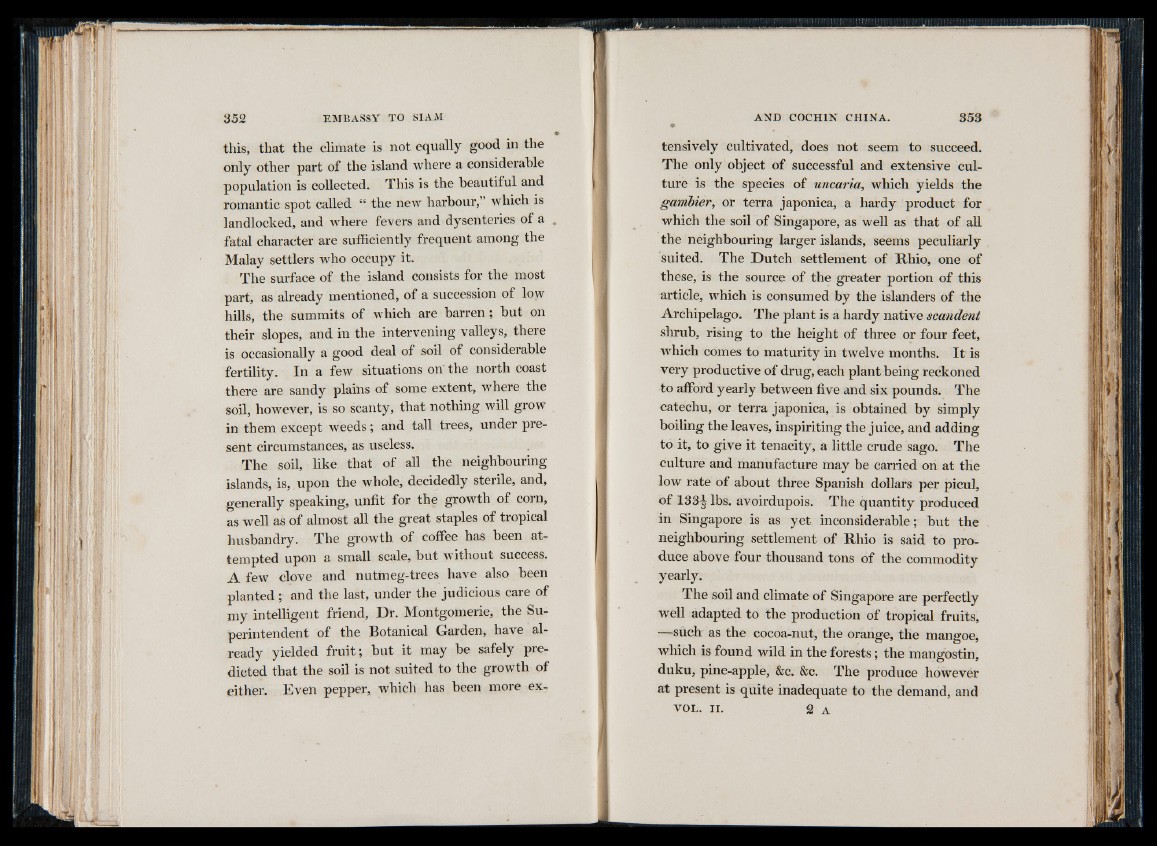
this, that the climate is not equally good in the
only other part of the island where a considerable
population is collected. This is the beautiful and
romantic spot called “ the new harbour, ’ which is
landlocked, and where fevers and dysenteries of a
fatal character are sufficiently frequent among the
Malay settlers who occupy it.
The surface of the island consists for the most
part, as already mentioned, of a succession of low
hills, the summits of which are barren ; but on
their slopes, and in the intervening valleys, there
is occasionally a good deal of soil of considerable
fertility. In a few situations on the north coast
there are sandy plains of some extent, where the
soil, however, is so scanty, that nothing will grow
in them except weeds; and tall trees, under present
circumstances, as useless.
The soil, like that of all the neighbouring
islands, is, upon the whole, decidedly sterile, and,
generally speaking, unfit for the growth of corn,
as well as of almost all the great staples of tropical
husbandry. The growth of coffee has been attempted
upon a small scale, but without success.
A few clove and nutmeg-trees have also been
planted; and the last, under the judicious care of
my intelligent friend, Dr. Montgomerie, the Superintendent
of the Botanical Garden, have already
yielded fruit; but it may be safely predicted
that the soil is not suited to the growth of
either. Even pepper, which has been more extensively
cultivated, does not seem to succeed.
The only object of successful and extensive culture
is the species of uncaria, which yields the
gambier, or terra japonica, a hardy product for
which the soil of Singapore, as well as that of all
the neighbouring larger islands, seems peculiarly
suited. The Dutch settlement of Rhio, one of
these, is the source of the greater portion of this
article, which is consumed by the islanders of the
Archipelago. The plant is a hardy native scandent
shrub, rising to the height of three or four feet,
which comes to maturity in twelve months. I t is
very productive of drug, each plant being reckoned
to afford yearly between five and six pounds. The
catechu, or terra japonica, is obtained by simply
boiling the leaves, inspiriting the juice, and adding
to it, to give it tenacity, a little crude sago. The
culture and manufacture may be carried on at the
low rate of about three Spanish dollars per picul,
of 133^ lbs. avoirdupois. The quantity produced
in Singapore is as yet inconsiderable; but the
neighbouring settlement of Rhio is said to produce
above four thousand tons of the commodity
yearly.
The soil and climate of Singapore are perfectly
well adapted to the production of tropical fruits,
—such as the cocoa-nut, the orange, the mangoe,
which is found wild in the forests; the mangostin,
duku, pine-apple, &c. &c. The produce however
at present is quite inadequate to the demand, and
v o l . I I . 2 A